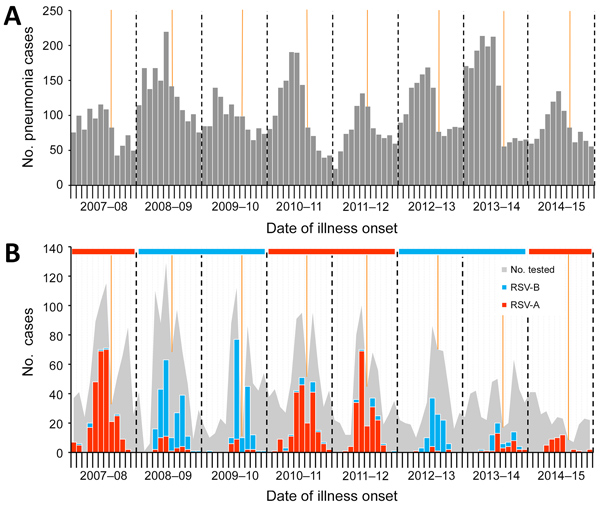Volume 25, Number 6—June 2019
Research
Respiratory Syncytial Virus Seasonality, Beijing, China, 2007–2015
Figure 1

Figure 1. Cases of pneumonia and RSV infection in hospitalized children 28 days–13 years of age, by month, Beijing, China, July 1, 2007–June 30, 2015. A) Cases of pneumonia (defined as International Classification of Diseases, 9th Revision, codes 480–488), including children not enrolled in the study (n = 9,950). B) RSV-positive cases (n = 1,270), by subgroup. The shaded area represents the total number of children enrolled in study (n = 4,225). The horizontal ribbon on top of the chart denotes the dominant RSV subgroup for that year. We assigned 2013–14 as an RSV-B–dominant season for the purposes of modeling, although the numbers of RSV-A and RSV-B cases were almost equal. Orange vertical lines denote the Chinese Spring Festival; dashed vertical lines indicate divisions between seasons. RSV, respiratory syncytial virus; RSV-A, RSV subgroup A; RSV-B, RSV subgroup B.
1These authors contributed equally to this article.
2These senior authors contributed equally to this article.